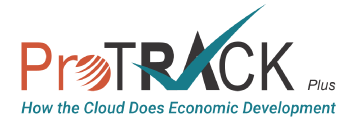As an economic development organization, you need to track and analyze the performance of your EDO and the community’s growth. By measuring key indicators, you can ascertain whether your strategies are yielding desired outcomes and contributing to the sustainable growth of your community.
But it’s easier said than done! With so many projects and paperwork, it’s hard to put everything into Excel. Thus, you need some metrics that tell you how well your EDO is performing and how thriving your community is.
Let’s explore the top 10 indicators that signal a successful and thriving EDO.
Top 10 Indicators That Signal A Successful And Thriving EDO.
1. Robust Job Growth
A thriving EDO can be measured by the number of new and retained job opportunities it facilitates in your locale. The primary goal of any economic development initiative is to accelerate the local economy’s growth faster than left to its own devices. One key metric is to facilitate growth in high-paying employment opportunities for your citizens. If your EDO is successful, you should observe consistent quality job growth in various sectors. Whether it’s attracting new businesses, supporting the expansion of existing ones, or fostering entrepreneurship, a healthy increase in quality job opportunities reflects your organization’s effectiveness.
2. Increased Capital Investment
A strong EDO boosts capital investments from both domestic and foreign sources. As new or existing businesses choose to invest in your region, it indicates a favorable business environment that reflects positively on your organization. Keeping an eye on the level of investment in key industries, infrastructure projects, and commercial real estate developments is an important metric for success. A rise in private investment is a clear sign of the confidence investors have in your locale’s potential for growth.
3. Increased Tax Revenues
Because local governments are typically the source of all incentives used to stimulate growth in the economy, Cities, Counties, School Districts, and other taxing jurisdictions are keenly interested in seeing their respective revenues grow. It is critically important that you and your leadership approach all elected officials and key managers and establish a policy for how discounting their initial revenues in return for a sizable boost in future revenues is agreed to in writing. A key component in this agreement is called the “But For” effect. All parties must truly believe that “But For” granting discounts in tax revenues today, the project in question simply will not happen. Incentives can be extremely controversial without this agreement.
4. Boosting Personal Incomes
One of the main goals of economic development is to improve the standard of living for all residents. Rising wages and increasing income levels indicate that your EDO’s efforts are translating into tangible benefits for the community. Analyze wage data and track changes in income levels to gauge the impact of your organization’s initiatives on boosting wealth in your locale.
5. Increasing the Employment Rate.
Measuring the unemployment rate is not a great metric to demonstrate success. We are currently seeing some of the lowest unemployment rates in recent history without seeing a corresponding improvement in local economies. There are several reasons for this but it is largely due to a reduced number of folks available in the workforce. The better metric to capture and track is the rate of change in the employment rate. Watching this number for how it is changing in the area you are responsible for, will translate into a stronger story about your organization’s success. It reflects a more successful alignment of job creation efforts, workforce development programs, business attraction, and retention, and expansion strategies. Making this switch can be tricky and you will need to spend time convincing your leadership it is a better metric. If you get pushback from your leadership and stakeholders, it might be helpful to use both metrics.
6. Stakeholder Engagement and Collaboration
A thriving EDO actively engages with various stakeholders, local businesses, government agencies, education and training institutions, and community partner organizations. Collaboration fosters a unified approach to economic development, pooling resources, knowledge, and expertise. If your EDO has strong ties with its stakeholders and fosters a culture of collaboration, it demonstrates effective leadership and the potential for greater achievements.
You can also ensure stakeholders’ complete involvement in the EDO through economic development software. The EDO tools these days are highly evolved and ensure that your reporting needs and stakeholder engagement is met.
7. Positive Impact on Quality of Life
Quality of life is a frequently used and often misunderstood metric. The reason it can be problematic is that everyone has a different definition of what constitutes a good quality of life. That said, it is undeniably one of the most powerful metrics for your EDO to seek to define and work to improve. Economic development should not solely focus on financial gains but also on improving the overall quality of life for residents. Establish a baseline for things like healthcare, education, housing, recreation, entertainment, and public infrastructure. Then track deviations in this baseline over time to demonstrate where improvements are being made and more importantly where more work needs to be done. A positive shift in these areas reflects a well-rounded and successful approach to economic development.
8. Growing New Businesses Organically
If your community is thriving, healthy, and happy, entrepreneurs will seek you out as the best location to start up a new business. Attraction, Retention, and Entrepreneurship are the three legs to the economic development stool. One way to undertake all of these is to use economic development CRM that can offer you BR&E capabilities.
One caveat to undertaking a strong entrepreneurship program is to make sure your leadership fully understands that the time and money invested will likely not produce the same ROI as your attraction and retention efforts. Setting these expectations is extremely important to succeed in the long term.
9. Sustainable Growth for Future Generations
As with the term quality of life, sustainability can mean different things to different people. Therefore, to use this as a metric your task will be to have your leadership agree on “Your Definition”. There are two large buckets for sustainability. The first bucket takes into consideration how your wealth-building efforts will impact local natural resources. As an example, there is a huge push right now to recruit semiconductor manufacturing plants because of the enormous capital investment which translates into large revenue boosts to local governments and schools. However, inherent in this manufacturing process is the need for very large amounts of potable and raw water. Make sure everyone is on board with the natural resource trade-offs.
The second bucket is economic parity. This means that all socio-economic partners must see a future where they can personally benefit. To use a well-worn but true phrase, to build a truly sustainable economy the rising tide must float all boats. Achieving parity in income, education, and quality of life is worth all the efforts your EDO will undertake.
10. Recognition and Awards
An EDO that is performing well is likely to receive recognition and awards from industry peers and economic development associations. Such accolades validate the efforts of your organization and showcase its achievements on a broader stage. Typically, your organization must submit an application to the award’s committees that outlines exactly what has been accomplished and demonstrates how you have surpassed other similar organizations in the given award criteria. Celebrate these accomplishments, as they can inspire further growth and motivate your leadership and community stakeholders to continue their exceptional work.
Conclusion
As an Economic Development Organization, understanding these top 10 indicators of success will empower you to make informed decisions, refine your strategies, and ensure the long-term prosperity of your community. Continuously track and analyze these key performance indicators (KPIs) to assess your progress and make data-driven improvements.
ProTRACKPlus can support your EDO’s journey toward success. It has all the tools that you need to track and analyze the projects. What makes it the best CRM for economic development is its capability to send out reports. You can get reports in seconds and send them out to your stakeholders. If you have any questions, take a free demo of the tool today.

